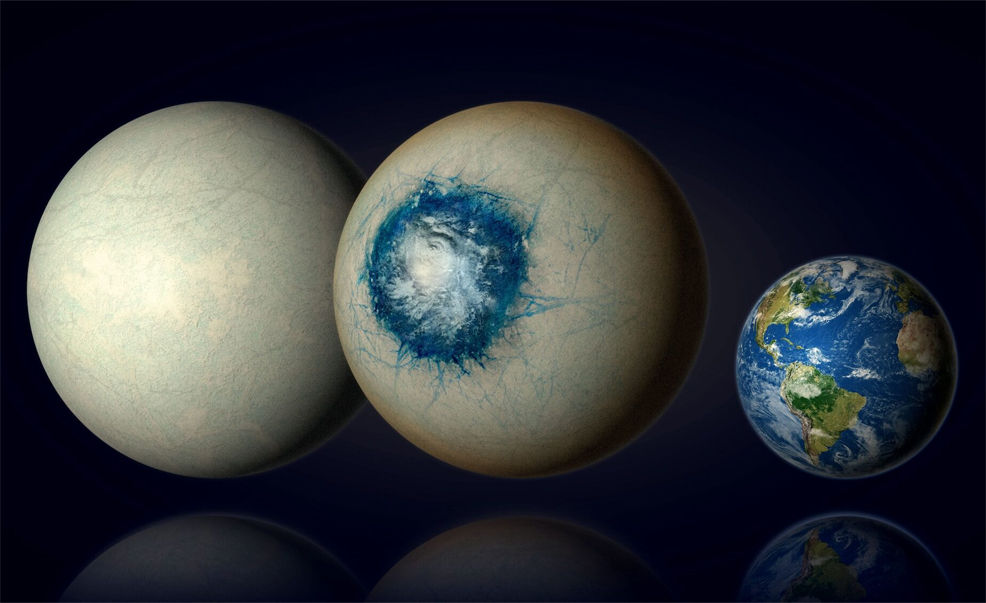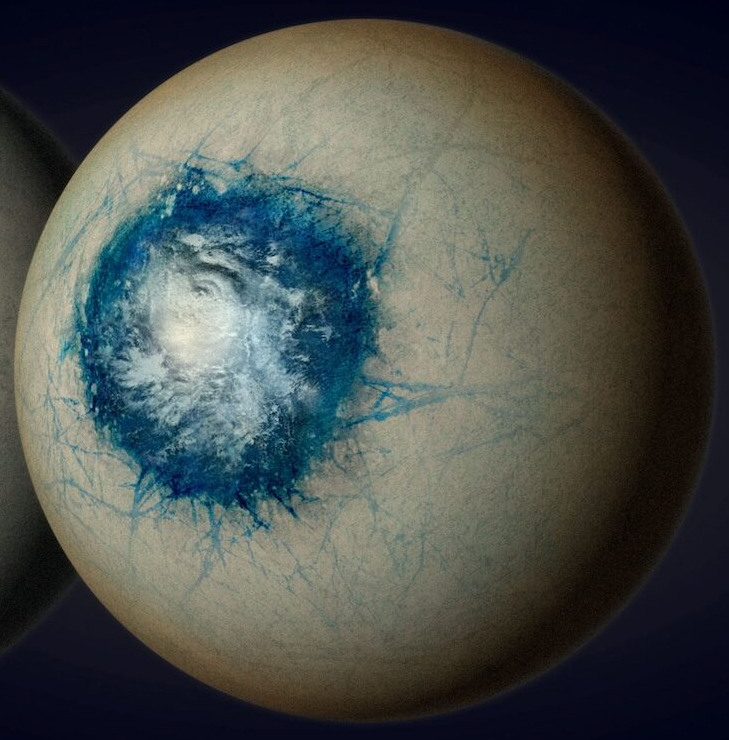
9th July 2024 A new super-Earth with potential for life The exoplanet LHS 1140 b, first discovered in 2017, is now considered a top candidate for habitability, thanks to new and improved data from the James Webb Space Telescope (JWST).
LHS 1140 is a red dwarf, about 20% of our Sun's diameter, located 49 light-years away. Several years ago, a study called the MEarth Project revealed the existence of two planets in the system – LHS 1140 b and c – discovered in 2017 and 2018, respectively. Initially, the first of these had been estimated to have 1.4 times the Earth's radius and seven times its mass, suggesting a dense rocky world. Later studies then revised the radius upwards to 1.7 times Earth's, with a lower mass of 5.6 Earth's, no longer consistent with a rocky planet. Astronomers had speculated that LHS 1140 b might instead be an ocean world, given the distance from its star, or possibly a gaseous 'mini-Neptune'. The other planet had a radius (1.3x) and mass (1.9x) more like Earth, but a much hotter environment due to its closer orbit. A new study, by researchers from the University of Michigan and Université de Montréal, is published this week in The Astrophysical Journal Letters. It uses better and more accurate data from the James Webb Space Telescope (JWST) to generate an improved picture of LHS 1140 b. After combining their measurements with previous data from TESS, Spitzer, and the Hubble Space Telescope, this planet has now emerged as one of the most promising potentially habitable super-Earths. The team used a technique called transmission spectroscopy, which measures how the starlight passing through a planet's atmosphere changes with wavelength. When the planet transits in front of its star, some of the starlight filters through the planet's atmosphere, if it has one. By analysing this filtered starlight, astronomers can determine the atmospheric composition and look for signs of gases that may indicate habitability. An example (not one from this specific study) can be seen in this NASA video:
According to the latest analysis of LHS 1140 b, the mini-Neptune scenario can now be ruled out, and a super-Earth is now favoured. The best match for its transmission spectrum is a thick, nitrogen-rich atmosphere – possibly similar to Earth's, which is 78% nitrogen. It likely resembles a snowball or ice world. "This is the first time we have ever seen a hint of an atmosphere on a habitable zone rocky or ice-rich exoplanet. Detecting atmospheres on small, rocky worlds is a major goal for the JWST, but these signals are much harder to see than for giant planet atmospheres," said Ryan MacDonald, astrophysicist in the University of Michigan's Department of Astronomy. "LHS 1140 b is one of the best small exoplanets in the habitable zone capable of supporting a thick atmosphere, and we might just have found evidence of air on this world." Between 10 and 20% of the planet's mass may be composed of water, according to the team. While further observations are needed to refine the measurements of atmospheric thickness, its position in the star's habitable zone means there is strong potential for a liquid ocean at the sub-stellar point (the area of a planet's surface that always faces the host star due to the planet's synchronous rotation, much like Earth's moon). This "bull's eye" ocean could be as wide as 4,000 km, equivalent to half the surface area of the Atlantic. The team calculates that its centre may be as warm as 20 °C (68 °F). In addition, the star LHS 1140 appears to be calm. Red dwarfs are typically far more variable and violent than their larger, more stable cousins, with huge flares and bursts of radiation threatening the habitability of nearby planets. No flares have yet been observed in this system, however. There are few windows of opportunity to view LHS 1140 b using the Webb telescope – a maximum of only eight visits per year are possible. The team explains that several more years of observations will be needed to detect other gases, such as carbon dioxide, and to confirm the presence of liquid water on the surface. However, the potential discoveries may well be worth the wait. "Of all currently known temperate exoplanets, LHS 1140 b could well be our best bet to one day indirectly confirm liquid water on the surface of an alien world beyond our Solar System," said Charles Cadieux, lead author of the science paper and doctoral student at Université de Montréal. "This would be a major milestone in the search for potentially habitable exoplanets."
Comments »
If you enjoyed this article, please consider sharing it:
|
||||||








